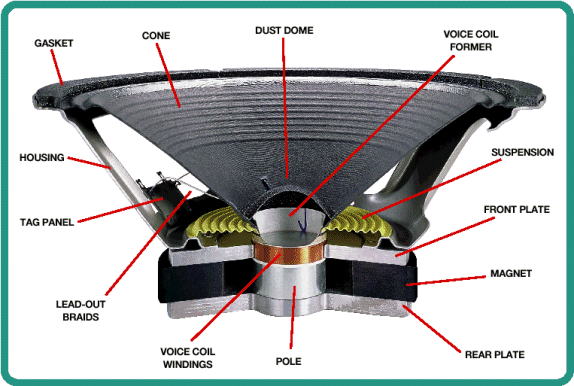
| There are a number of
important technical issues relating to the matching of speakers to amplifiers,
and to the wiring of multiple speaker systems (eg 2 x 12”, 4 x 12”,
etc.). The impedance of a speaker is basically a measurement of how hard the amplifier will have to work to drive that speaker. The impedance is measured in Ohms and is clearly marked on the back of most speakers. The impedance of the speaker(s) installed in an amplifier or cabinet will be quoted in the Operating Instructions. It is essential, particularly in the case of tube (valve) amplifiers, that the impedance or ‘load’ presented to the amplifier is correct; otherwise this can damage the amplifier. |
| Many tube amplifiers are set up with
multiple ‘taps’, eg. 8 and 16 Ohms. In such cases, it is important
that the impedance of the speaker system matches the impedance value set on the
amplifier. Most transistor amplifiers are designed to drive 8 Ohm loads. Although the impedance matching is not as critical as with tube amplifiers, the impedance of the speaker(s) should be at least equal to the minimum impedance of the amplifier. The way in which multiple speakers are wired (in a 4 x 12” cabinet for instance) determines the overall impedance of the speaker system. Hence wiring is critical. There are basically two ways of wiring multiple speakers: Series and Parallel. Here are diagrams of the most typical wiring configurations. |
